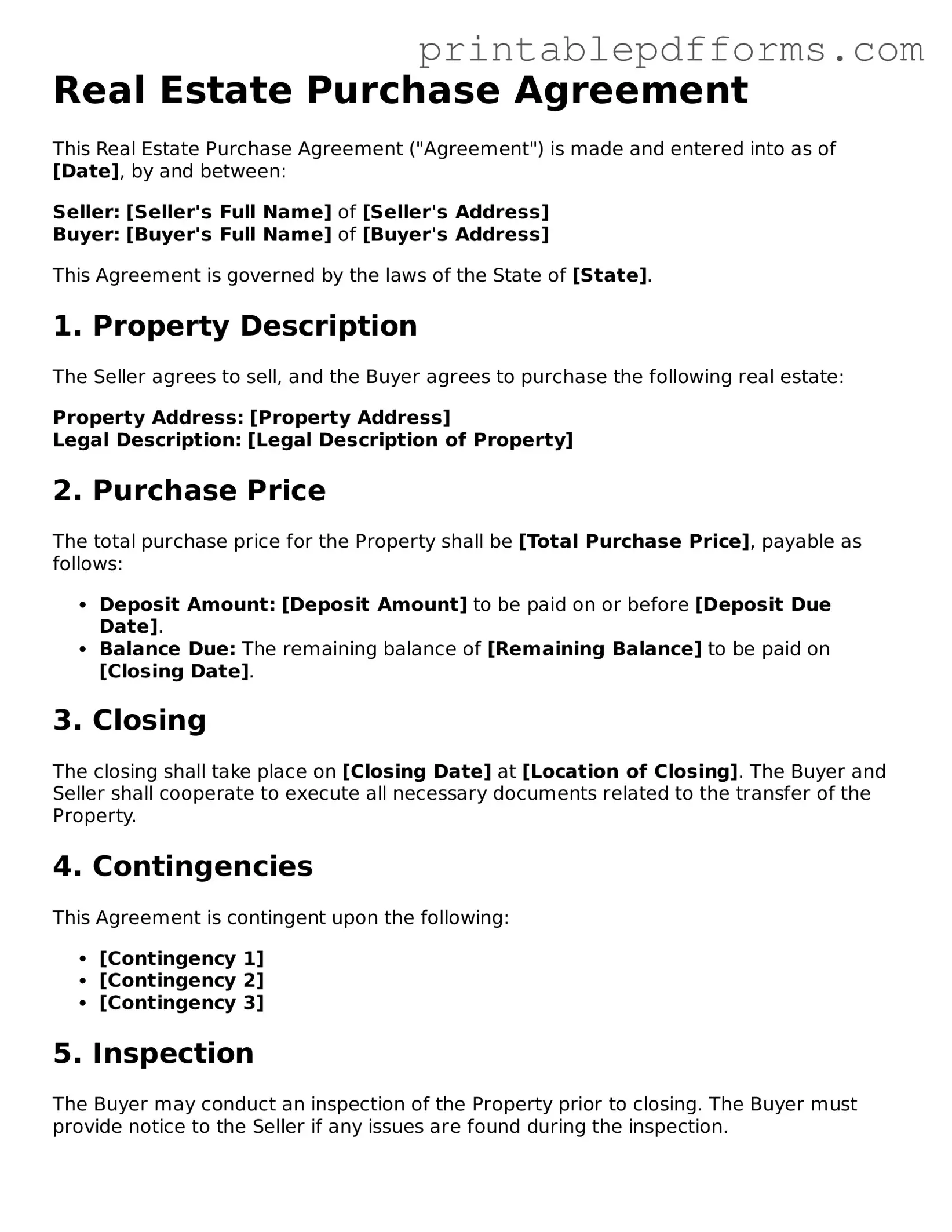Real Estate Purchase Agreement
This Real Estate Purchase Agreement ("Agreement") is made and entered into as of [Date], by and between:
Seller: [Seller's Full Name] of [Seller's Address]
Buyer: [Buyer's Full Name] of [Buyer's Address]
This Agreement is governed by the laws of the State of [State].
1. Property Description
The Seller agrees to sell, and the Buyer agrees to purchase the following real estate:
Property Address: [Property Address]
Legal Description: [Legal Description of Property]
2. Purchase Price
The total purchase price for the Property shall be [Total Purchase Price], payable as follows:
- Deposit Amount: [Deposit Amount] to be paid on or before [Deposit Due Date].
- Balance Due: The remaining balance of [Remaining Balance] to be paid on [Closing Date].
3. Closing
The closing shall take place on [Closing Date] at [Location of Closing]. The Buyer and Seller shall cooperate to execute all necessary documents related to the transfer of the Property.
4. Contingencies
This Agreement is contingent upon the following:
- [Contingency 1]
- [Contingency 2]
- [Contingency 3]
5. Inspection
The Buyer may conduct an inspection of the Property prior to closing. The Buyer must provide notice to the Seller if any issues are found during the inspection.
6. Representations and Warranties
Each party represents and warrants the following:
- The Seller is the legal owner of the Property and has the authority to sell.
- The Buyer has the financial capacity to purchase the Property.
7. Governing Law
This Agreement shall be governed by the laws of the State of [State].
8. Signatures
By signing below, both parties agree to the terms of this Agreement:
_______________________
Seller's Signature
Date: [Seller's Signature Date]
_______________________
Buyer's Signature
Date: [Buyer's Signature Date]
This document is intended for informational purposes only and does not constitute legal advice. It is recommended that both parties consult with an attorney before signing.
